2014 Lincoln MKZ and MKZ Hybrid: Car Seat Check

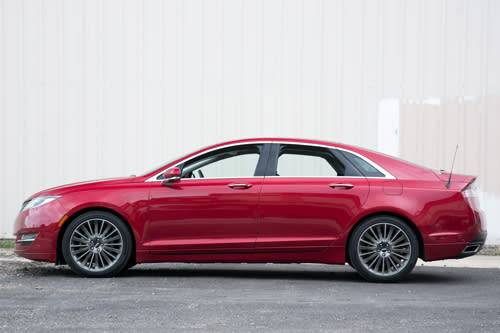
Since its 2013 redesign, the Lincoln MKZ has delivered in the looks department. When it comes to child-safety-seat fit, this near-luxury midsize sedan and its hybrid counterpart perform well, but a difficult-to-access Latch anchor caused it to lose some points. In this Car Seat Check, we tested the MKZ with optional inflatable rear seat belts ($195) in the outboard seats. The MKZ Hybrid has the same dimensions as the MKZ.
How many car seats fit in the second row? Two
What We Like
- There was no need to move the front passenger seat forward to fit the rear-facing convertible.
- The forward-facing convertible fit well, but the buried Latch anchors made installing the seat a chore.
- Our high-back booster seat fit well in the MKZ’s backseat, and the buckles for the inflatable seat belts are on stable bases.
What We Don’t
- The two sets of Latch anchors are buried between the back and bottom cushions, making installing all of our child-safety seats a struggle.
- The available inflatable seat belts have large buckles that also block some access to the Latch anchors.
- To install the rear-facing infant-safety seat, we had to move the front passenger seat forward to accommodate it. Our tester had enough legroom to sit comfortably, but taller parents will want to make sure they have a comfortable amount.
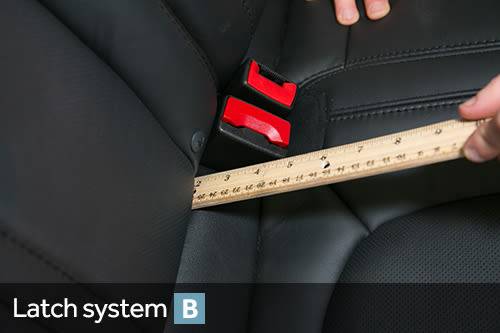
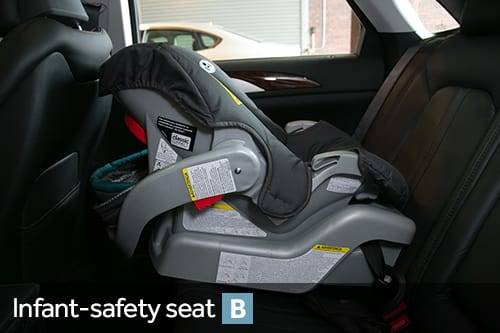
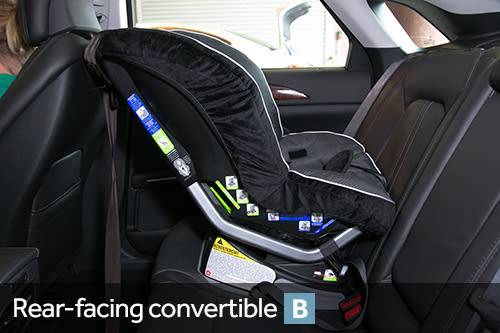
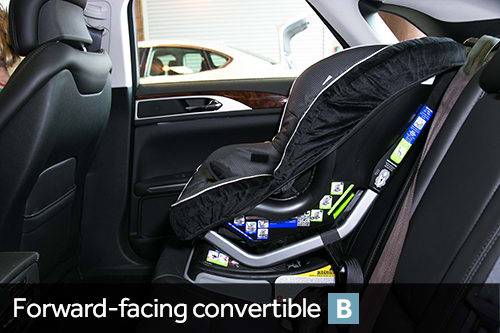
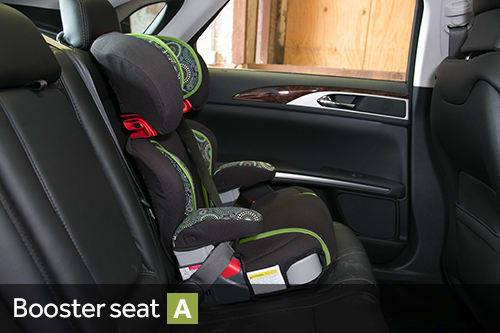
Grading Scale
A: Plenty of room for the car seat and the child; doesn’t impact driver or front-passenger legroom. Easy to find and connect to Latch and tether anchors. No fit issues involving head restraint or seat contouring. Easy access to the third row.
B: Plenty of room. One fit or connection issue. Some problems accessing third row when available.
C: Marginal room. Two fit or connection issues. Difficult to access third row when available.
D: Insufficient room. Two or more fit or connection issues.
F: Does not fit or is unsafe.
About Cars.com’s Car Seat Checks
Editors Jennifer Geiger and Jennifer Newman are certified child-safety-seat installation technicians.
For the Car Seat Check, we use a Graco SnugRide Classic Connect 30 infant-safety seat, a Britax Marathon convertible seat and Graco TurboBooster seat. The front seats are adjusted for a 6-foot driver and a 5-foot-8 passenger. The three child seats are installed in the second row. The booster seat sits behind the driver’s seat, and the infant and convertible seats are installed behind the front passenger seat.
We also install the forward-facing convertible in the second row’s middle seat with the booster and infant seat in the outboard seats to see if three car seats will fit; a child sitting in the booster seat must be able to reach the seat belt buckle. If there’s a third row, we install the booster seat and a forward-facing convertible. To learn more about how we conduct our Car Seat Checks, go here.
Parents should also remember that they can use the Latch system or a seat belt to install a car seat, and that Latch anchors have a weight limit of 65 pounds, including the weight of the child and the weight of the seat itself.
Cars.com photos by Evan Sears

Editor-in-Chief Jennifer Newman is a journalist with more than 25 years of experience, including 15 years as an automotive journalist at Cars.com. Jennifer leads the Editorial team in its mission of helping car shoppers find the vehicle that best fits their life. A mom of two, she’s graduated from kids in car seats to teens behind the steering wheel. She’s also a certified car-seat technician with more than 12 years of experience, as well as member of the World Car Jury, Automotive Press Association and Midwest Automotive Media Association. LinkedIn: https://www.linkedin.com/in/jennilnewman/ Instagram: @jennilnewman
Featured stories

15-Year Car Loans Aren’t a Thing, But Americans Are Getting More Comfortable With Long Loan Terms

2025 Kia Telluride Review: Rougher Roads Ahead



